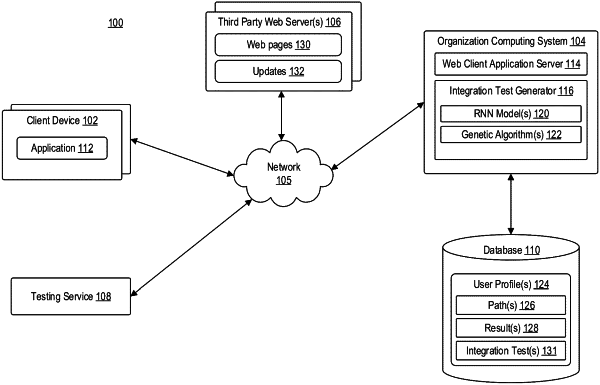| CPC G06F 11/3684 (2013.01) [G06N 3/044 (2023.01); G06N 3/086 (2013.01)] | 20 Claims |

|
1. A method of testing a target website, comprising:
identifying, by a computing system, scripting code associated with a plurality of websites hosted by a plurality of third party servers;
generating, by the computing system, a recurrent neural network configured to identify broken paths within a target website based on the scripting code, the generating comprising:
training the recurrent neural network to learn a first plurality of paths through the plurality of websites, wherein a genetic algorithm is used to inject randomness into the learning by adjusting variables of the recurrent neural network, wherein the variables define how the recurrent neural network simulates a user navigating the plurality of websites; and
deploying, by the computing system, the recurrent neural network to test the target website for errors.
|